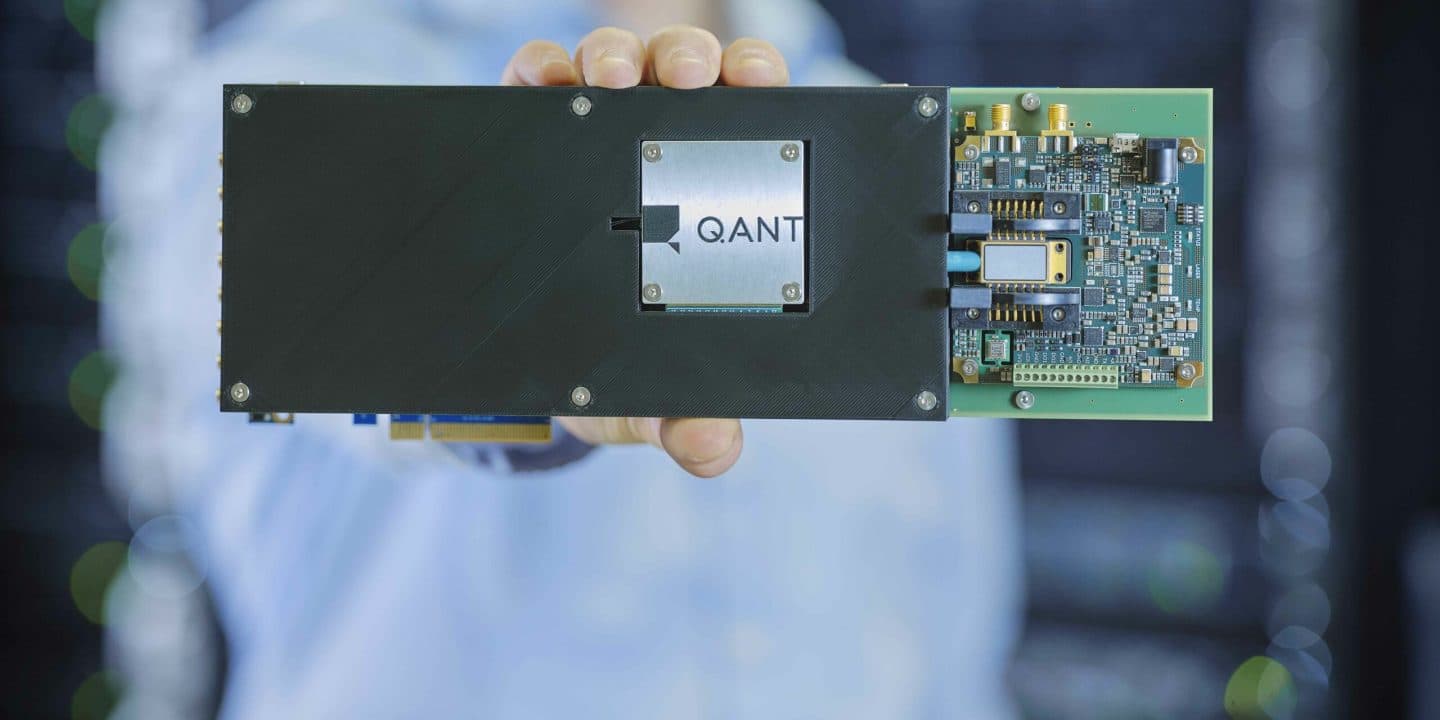
A Germany based innovation enables 30x energy efficiency in AI, laying the groundwork for sustainable high-performance computing.

A groundbreaking photonic processor developed by Q.ANT, Germany promises to bring a difference in AI and high-performance computing by dramatically reducing energy consumption. The native processing unit (NPU), based on the company’s proprietary LENA (light empowered native arithmetic) architecture, uses light instead of electrons to perform calculations, offering a 30-fold improvement in energy efficiency compared to conventional CMOS technology. Fully compatible with the standard PCI-Express interface, this processor aims to integrate seamlessly into current data centre infrastructures.
“With our photonic chip technology now available on the standard PCIe interface, we’re bringing the incredible power of photonics directly into real-world applications,” remarked Dr. Michael Förtsch, chief executing officer, Q.ANT.
The photonic NPU is designed for complex applications such as AI inference, machine learning, and advanced physics simulations. Industries involved in AI development, scientific research, and energy-conscious data centres stand to benefit most from this innovation. The processor enables significant cost reductions for tasks like training large language models, making it appealing for organisations striving to balance sustainability with performance.
The company attributes its success to thin-film lithium niobate (TFLN) on insulator technology, which enables precise light manipulation at the chip level. Unlike standard CMOS designs that rely on thousands of transistors for basic tasks, the company NPU achieves the same results using single optical elements. For example, it performs accurate image recognition with only 0.2 million operations, compared to the 10 million required by conventional processors.
“Q.ANT’s novel approach to photonic processing is a groundbreaking step towards addressing the escalating energy demands of the AI era,” noted Eric Mounier, chief analyst, Yole Group.
The processor is set to transform fields like time-series analysis, graph problem-solving, and partial differential equations. Deliveries of the first commercial processors are expected to begin in February 2025, marking a major milestone in the development of sustainable computing technologies. By bridging the gap between high-performance and low-energy consumption, this innovation offers a glimpse into a more sustainable future for AI and scientific research.










